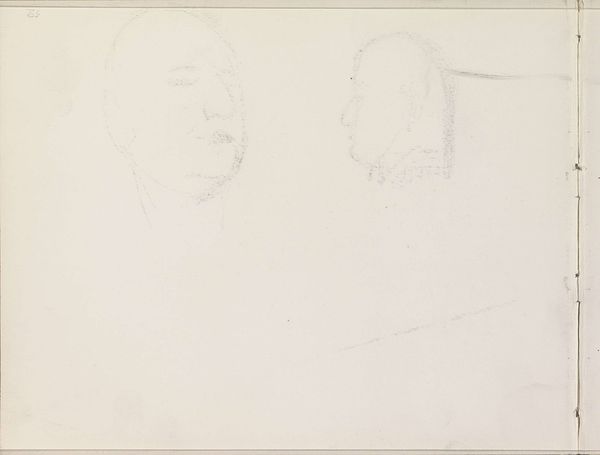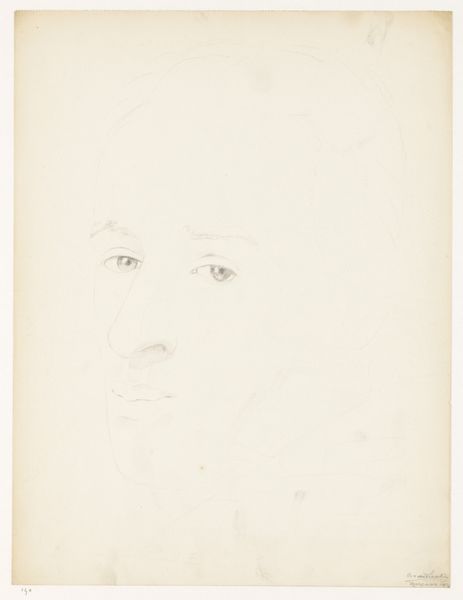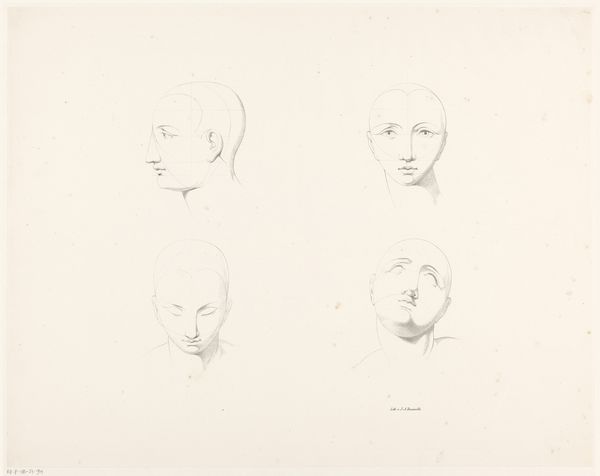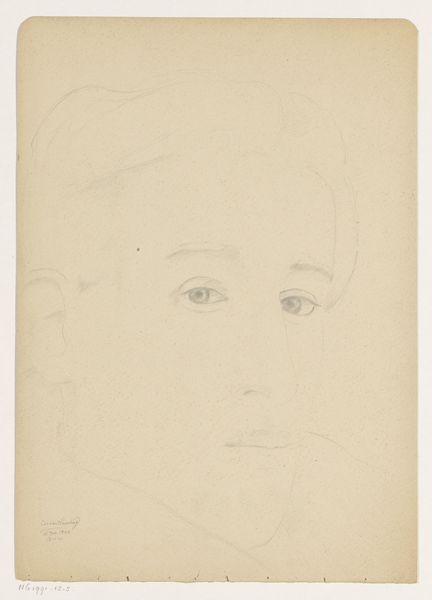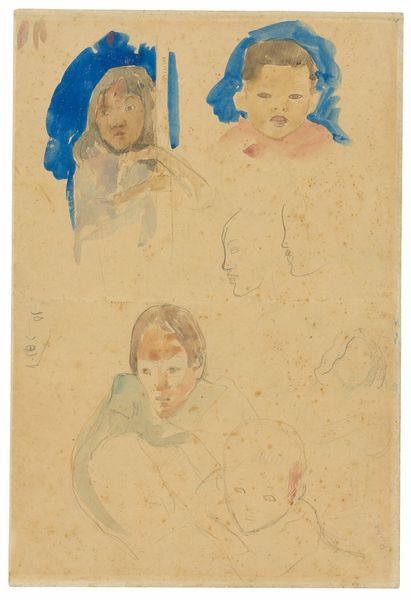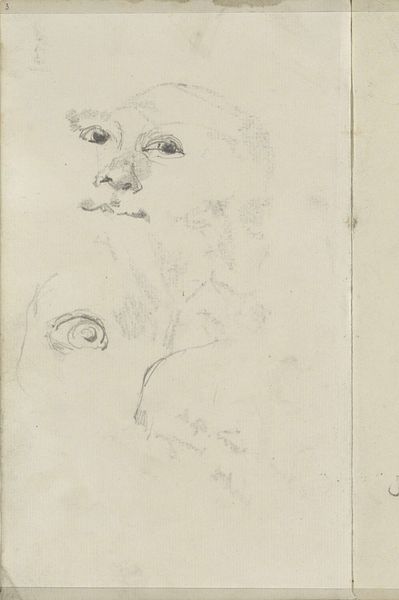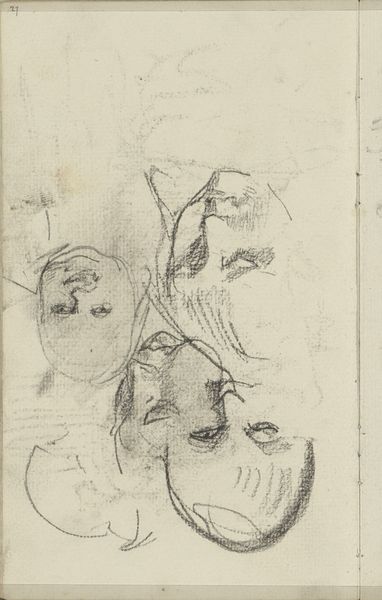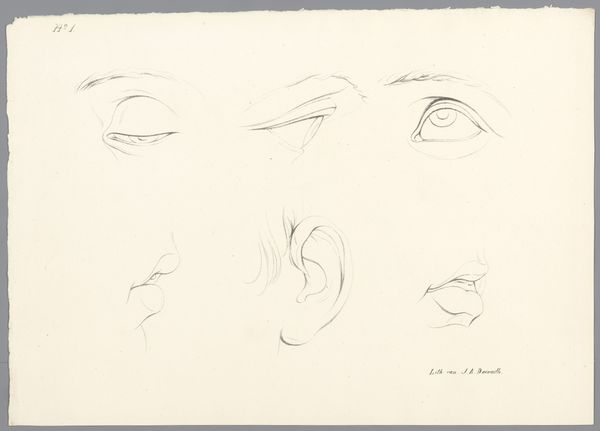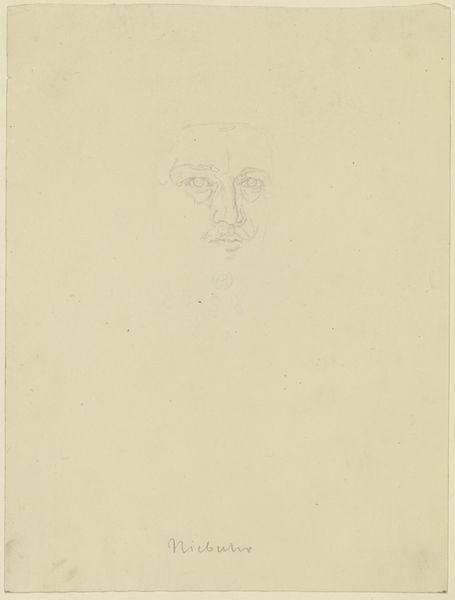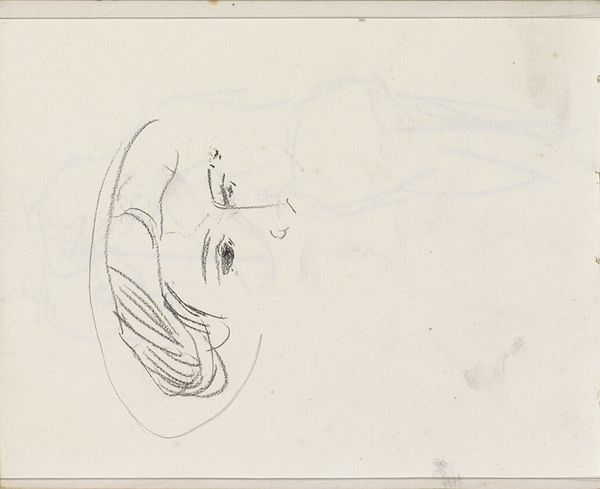
drawing, pencil
#
portrait
#
drawing
#
neoclassicism
#
pencil
#
line
#
academic-art
Dimensions: height 328 mm, width 424 mm
Copyright: Rijks Museum: Open Domain
Curator: Let’s discuss this evocative drawing from 1785. It’s a portrait by Jan Brandes of his son, Jan Brandes Junior, rendered delicately in pencil. What are your initial thoughts on encountering it? Editor: The lightness is striking, almost ethereal. Two renditions of a young boy’s face, barely there on the page. They seem to hover between presence and absence. There’s a vulnerability in the very medium. Curator: It’s intriguing because Jan Brandes Senior, known for his travels and documentation of foreign lands, created this intimate portrait of his child in the academic Neoclassical style that was gaining traction at that time. The softness does juxtapose rather harshly against the sharp precision that Academic Art typically demanded. It’s almost a counterpoint to the grand narratives he was building in his travelogues. Editor: The innocence in their gazes pierces through despite the lack of dramatic shading. The image to the right seems to hold something—perhaps a bird? Both figures look almost translucent, hinting perhaps, at fragility. A young boy holding onto the ephemeral. It pulls at you. Curator: These portraits also present some fascinating art-historical context. This type of family portraiture, particularly of children, was emerging as a key way for families to assert their status, and project specific images. Brandes would likely be conscious of communicating not just love, but also, societal expectations for his progeny. Editor: Right, the social theatre inherent even in seemingly private family imagery. Are those supposed imperfections or merely stains across the page? There is an immediacy present with these drawings, a record, if you will, of a moment. Curator: Time leaves its traces even on the image. They create a patina and become part of the image's story. Brandes meticulously crafted detailed journals that recorded an inventory of imagery which then reasserted his image in the Netherlands. And even here, perhaps that very performative documentation continues. Editor: Ultimately, it makes me wonder about what became of young Jan, did he fulfill expectations and the subtle hope radiating here or did time, the stain as you pointed out, smudge some other form of future upon him? Curator: A beautiful and relevant question, considering how the creation of visual works has served a powerful message in our culture even now.
Comments
No comments
Be the first to comment and join the conversation on the ultimate creative platform.

